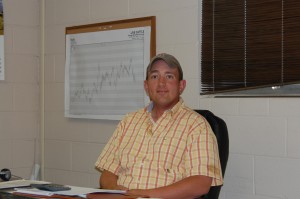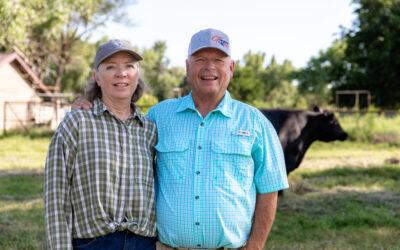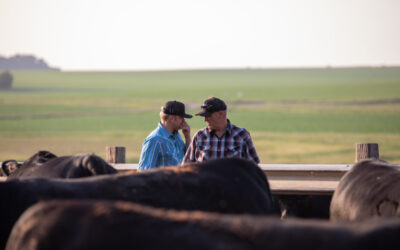
On target
But I was just out of college and didn’t want to appear like the naïve gal that I was (or still am depending who you ask), so I just nodded my head. I didn’t want to say that I knew the difference between a squirt gun, a BB gun and shotgun, but that was about it.
So I went back to my desk and did what every not-wanting-to-show-a-weakness journalist would do: I Googled it. And I learned two things: 1—CAB didn’t get any red flags about a new hire searching guns on her computer (thought about that one after-the-fact!) and 2—It doesn’t matter what the gun looks like, it’s just a darn good metaphor.
For what you ask? Well, cattle feeders with precise aim. We have a Thirty-Aught-Six (30.06) program that honors pens of cattle, fed at partner yards, that reach 30% brand acceptance with less than 6% outliers. You know, those cattle that hit the target.
Each month we publish a listing in the Angus Journal that honors those feeders with pens that meet that criteria. Even though we like those numbers, sometimes it’s the stories behind those charts that really get us excited. Sometimes we have to play to detective, uncovering those gems, but as we do, we want to share them with you.
So here’s our first installment of “On Target”, as authored by former intern (now CAB employee) Emily Krueger:
Setup for success

It’s no surprise to Landon Shaw, assistant manager of McPherson County Feeders, Inc., that Steve Humphries’ cattle made the cut for the 30.06 list earlier this year.
Nearly 44% of Humphries’ 73-heifer pen qualified, with more than 76% finishing at Yield Grade (YG) 1 or 2.
A regular customer at the feedlot since the mid-1980s, Humphries has an eye for superior genetics, and his exceptional health management sets those cattle up for success, Shaw says.
“Everything he’s fed with us has been high-quality cattle, and he focuses on getting them ready to feed,” says Shaw. “His herd health program is phenomenal. Every pen we get, we treat an incredibly small percentage of cattle that he sends to us and they’re always ready to grow.”
The heifers came to McPherson weighing 715 pounds (lb.) and reached 1,150 lb. with an average daily gain of 3.4 lb.
Humphries agrees genetics and health played a large role in his the success, and adds that the fescue grass around Maysville, Ky., where his stocker operation is located, allows him to feed his cattle efficiently with little to no supplementation.
“Our grass in this country is super good,” he says. The veteran cattleman knows where to find the best quality Angus cattle and keep them on track for feeding success: “That’s how we make money.”
———————————————————————————————————-
May your bottom line be filled with black ink,
~Miranda
You may also like
Helping Hands, Helping Herds
“When I die, I want to come back as one of your cows,” murmurs a friend to Steve Zybach. Full to the brim from an alfalfa ration every day, bountiful fields of lovegrass stretched out across the Texas Panhandle—and owners who leave no ounce of cattle care up for question. The Zybachs’ motivation for this level of dedication to their Angus cattle is simply love.
System Over Scale
For Dallas Knobloch, it’s not about being the biggest feedyard—it’s about building a high-quality system that works. Today, with Tory’s wife Sadie and daughter Ivy, the Knobloch family owns and operates 4K Cattle. They feed 2,500 cattle at eight locations within 10 miles of home, manage 1,000 acres of crops and run a 125-head cow herd, all near Hills, Minn.
Data-Driven Progress and Partnerships
Discussions at Feeding Quality Forum reaffirmed the industry’s commitment to quality, transparency and innovation. With record Prime rates and strong consumer demand, producers who invest in genetics, health and relationships are positioned to drive progress and capture premiums.



